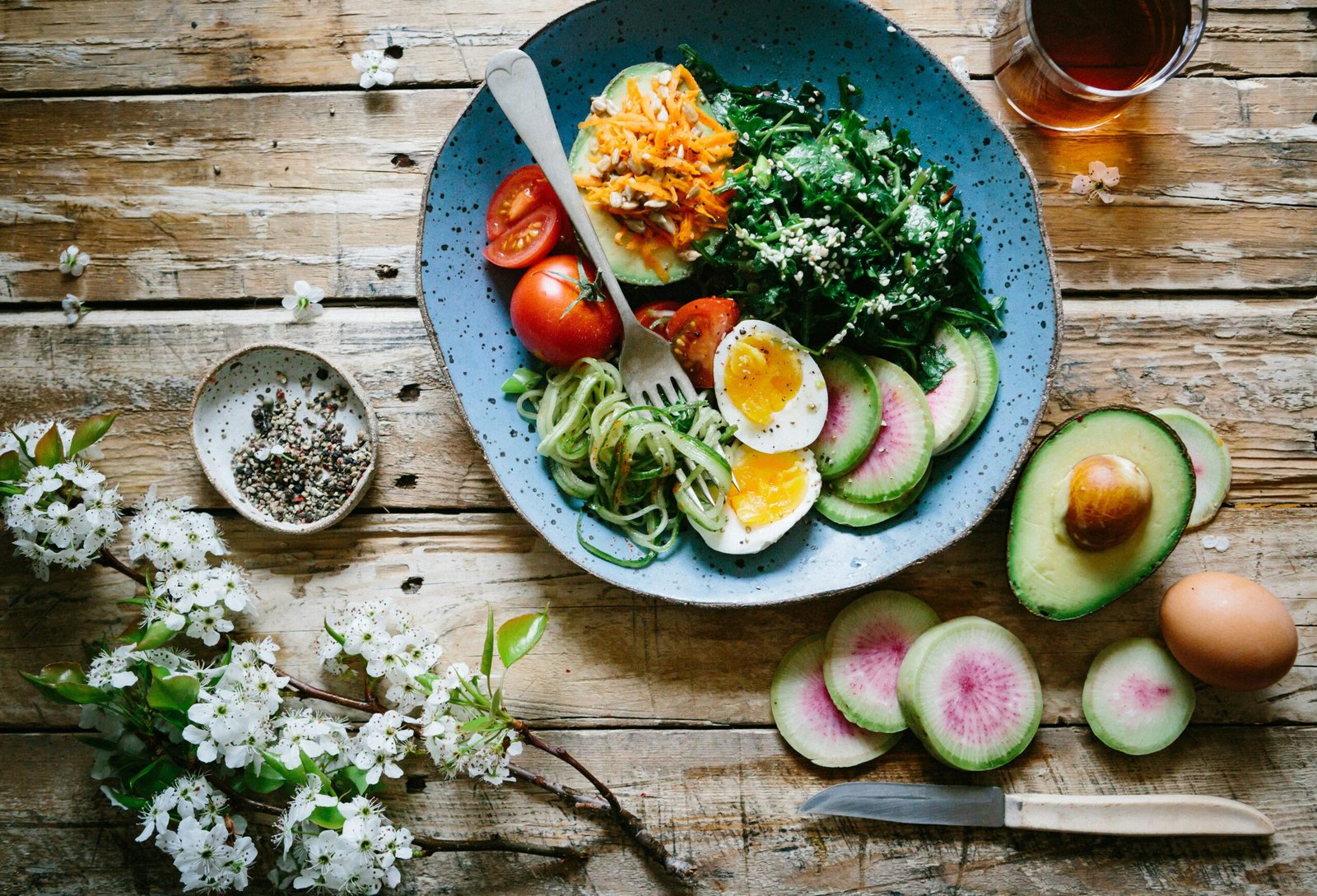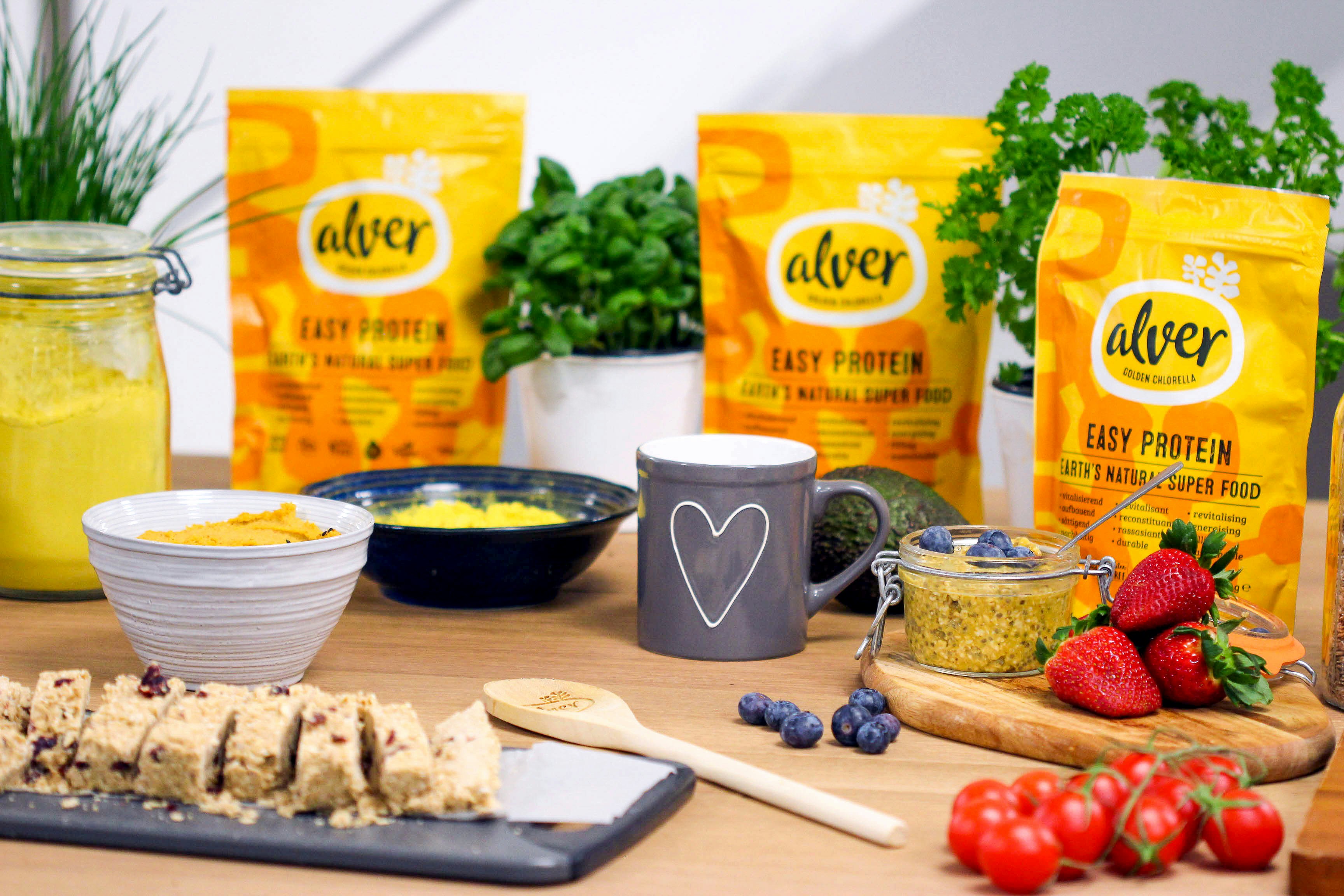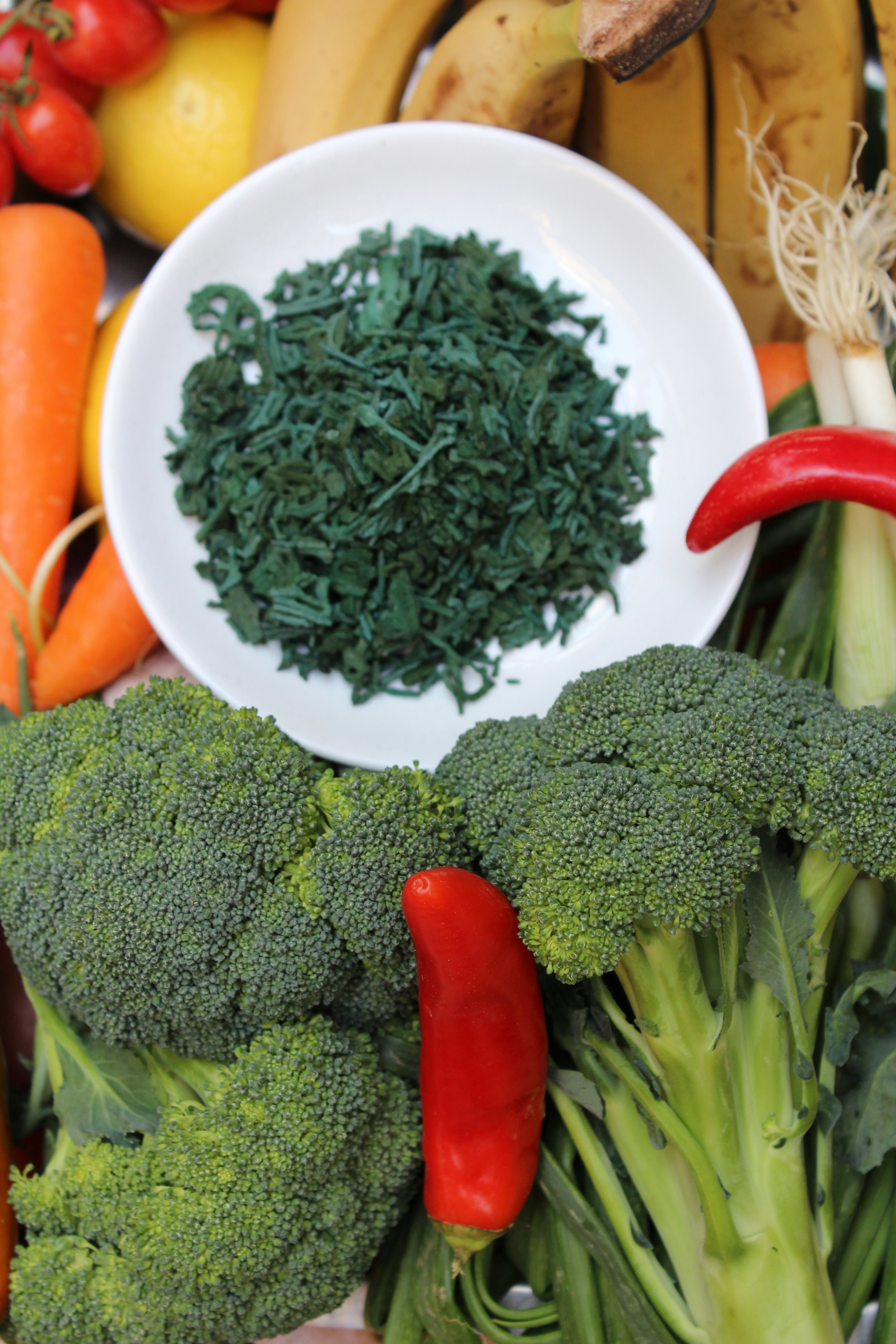Introduction to Healthy Eating
Healthy eating encompasses a balanced approach to consuming foods that contribute positively to overall well-being. It involves not only the quality of food choices but also the nutritional value that these choices bring to an individual’s diet. Incorporating a variety of foods, particularly staple foods, plays a crucial role in maintaining a healthy lifestyle. Staple foods, which are those that form the basis of a diet, provide essential nutrients that support bodily functions and enhance overall health.
The significance of healthy eating extends beyond mere sustenance; it possesses the power to prevent chronic diseases, manage weight, and improve mental well-being. Foods rich in vitamins, minerals, and other nutrients can strengthen the immune system and contribute to higher energy levels. By focusing on these nutrient-dense options, individuals can achieve a more balanced diet that meets their long-term health goals.
Incorporating staple foods into daily meal planning simplifies the process of healthy eating. These foods typically have a longer shelf life and can be utilized in various recipes, making them versatile components in a kitchen. For instance, whole grains, legumes, and vegetables serve as excellent foundations for meals and can be easily prepared in advance or cooked quickly when the time is limited. This approach to meal preparation not only saves time but also reduces the temptation to opt for less healthy convenience foods.
Moreover, planning meals around staple foods can lead to cost savings, as they are often less expensive than processed alternatives. This affordability encourages individuals to eat healthier without straining their budgets. Ultimately, by embracing the principles of healthy eating through the incorporation of staple foods, one can pave the way toward a more fulfilling and health-oriented lifestyle.
Understanding Staple Foods
Staple foods are defined as those fundamental items that form the basis of a balanced diet in many cultures around the world. They are typically inexpensive, accessible, and can be stored for long periods, making them reliable sources of essential nutrients. Unlike luxury foods, which are often consumed for pleasure rather than necessity, staple foods are crucial for maintaining energy levels and overall health.
Characteristics of staple foods encompass their nutritional value, versatility, and ability to sustain populations. Common examples include grains, legumes, root vegetables, and tubers. These food types are rich in carbohydrates, proteins, vitamins, and minerals, contributing to a well-rounded diet. For instance, whole grains provide carbohydrates essential for energy, while legumes offer a plant-based protein source that supports muscle maintenance and repair.
Moreover, staple foods display remarkable versatility in the kitchen. They can be prepared in various ways, accommodating different culinary traditions and preferences. For example, rice and quinoa can be served as side dishes, incorporated into salads, or used to create main courses. Similarly, legumes can be transformed into soups, stews, or salads, providing an array of flavors and textures. This flexibility allows individuals to prepare nutritious meals while accommodating different dietary requirements, such as vegetarianism or gluten intolerance.
In the realm of health and nutrition, staple foods play a vital role in achieving a balanced diet. Their consistent inclusion can help regulate blood sugar levels, promote digestive health, and reduce the risk of chronic diseases. As part of a health-conscious eating plan, staple foods provide a foundation upon which individuals can build a variety of meals using fresh produce, proteins, and healthy fats. By understanding the importance and benefits of staple foods, individuals can make informed dietary choices that support their overall well-being.
The Importance of Meal Prep
Meal preparation, often referred to as meal prep, plays a crucial role in maintaining a healthy diet. By taking the time to plan and prepare meals in advance, individuals can ensure that they are making conscious dietary choices, avoiding impulsive eating, and significantly reducing food waste. In our fast-paced society, meal prep offers a strategic advantage in promoting balanced nutrition and simplifying the eating process during busy weeks.
One effective approach to meal prep is to begin with planning. This involves creating a weekly menu that incorporates staple foods known for their nutritional value, such as whole grains, legumes, lean proteins, and a variety of fruits and vegetables. By setting a clear plan, individuals can streamline the grocery shopping process, ensuring they have all the necessary ingredients on hand. Additionally, this forward-thinking strategy can help in controlling portions and managing calorie intake, leading to healthier meal choices overall.
Once the planning phase is complete, the cooking process can begin. Preparing large batches of meals and incorporating staple foods not only saves time but also facilitates variety. For instance, cooking a big pot of quinoa or brown rice can serve as a versatile base for different dishes throughout the week. These staple foods can be paired with a variety of proteins and vegetables, offering numerous combinations that prevent monotony in one’s diet. After cooking, proper storage is essential; utilizing airtight containers and labeling each meal can prolong freshness and enhance organization.
Incorporating effective meal prep techniques makes healthy eating more achievable and sustainable. By dedicating time to plan, cook, and store meals, individuals can foster healthier eating habits that can be maintained throughout the week without unnecessary stress or deviation from their dietary goals.
The 15 Staple Foods You Should Always Have
Maintaining a healthy diet can be simplified by incorporating staple foods that maximize nutrition and culinary flexibility. Below are 15 essential staple foods that should be a part of your pantry or refrigerator, each accompanied by its health benefits and versatile uses.
1. Quinoa: This gluten-free grain is rich in protein and contains all nine essential amino acids, making it an excellent choice for vegetarians. Quinoa can be used in salads, bowls, or as a side dish.
2. Brown Rice: A whole grain that provides fiber and essential nutrients, brown rice can serve as a hearty base in various dishes, from stir-fries to burrito bowls.
3. Lentils: Packed with protein and fiber, lentils are an affordable legume that can be added to soups, salads, or blended into spreads.
4. Chickpeas: These versatile beans are high in protein and can be roasted for snacks, blended into hummus, or added to salads and stews.
5. Spinach: Loaded with vitamins A, C, and K, spinach is easily incorporated into smoothies, omelets, or served as a salad base.
6. Frozen Berries: Rich in antioxidants and vitamins, frozen berries make a nutritious addition to smoothies, oatmeal, and desserts year-round.
7. Nuts and Seeds: Almonds, walnuts, chia seeds, and flaxseeds are nutrient-dense, providing healthy fats and protein. These can be consumed as snacks or added to various dishes as toppings.
8. Greek Yogurt: An excellent source of protein and probiotics, Greek yogurt can be enjoyed on its own or used in smoothies, dressings, or desserts.
9. Eggs: A complete source of protein, eggs can be prepared in multiple ways, making them a flexible food option for breakfast, lunch, or dinner.
10. Sweet Potatoes: High in vitamins and fiber, sweet potatoes can be baked, mashed, or used in soups, contributing to various dishes.
11. Canned Tomatoes: Rich in vitamins and antioxidants, canned tomatoes serve as a base for sauces, soups, and stews, providing great flavor and nutrition.
12. Avocado: This creamy fruit is packed with healthy fats and nutrients, making it suitable for spreads, salads, or as a side dish.
13. Oats: A whole grain high in fiber, oats can be used in breakfasts, smoothies, and baked goods, promoting heart health.
14. Broccoli: Loaded with vitamins and minerals, broccoli can be steamed, roasted, or added to stir-fries, enhancing the nutritional profile of any meal.
15. Olive Oil: A healthy source of fat, olive oil can be utilized for cooking or as a base for dressings, enhancing flavor while providing numerous health benefits.
Integrating these staple foods into your diet can simplify healthy eating while offering a multitude of culinary options.
Incorporating Staple Foods Into Daily Meals
Integrating staple foods into your daily meals can significantly simplify meal planning and promote healthier eating habits throughout the week. By including a variety of these essential ingredients, you can create nutritious and satisfying options for breakfast, lunch, dinner, and snacks.
For breakfast, consider using whole grains such as oats or quinoa. A warm bowl of oatmeal topped with fresh fruits, nuts, or seeds not only provides a comforting start to the day but also offers sustained energy. Alternatively, a quinoa breakfast bowl can be prepared with yogurt, berries, and a drizzle of honey for a nutritious twist.
For lunch, incorporating lean proteins like chicken, beans, or chickpeas into salads can enhance both flavor and nutrient density. A simple salad with leafy greens, chickpeas, cherry tomatoes, and a homemade vinaigrette is quick to prepare and can be customized with various add-ins. Additionally, whole grain wraps with grilled chicken and an array of vegetables serve as a satisfying option that is easy to prepare in advance.
When it comes to dinner, utilizing vegetables and whole grains can create hearty, wholesome meals. A stir-fry featuring a mix of seasonal vegetables and brown rice or quinoa can be both colorful and nutritious. Consider topping it with grilled protein for additional flavor. Alternatively, a baked dish with sweet potatoes, beans, and spices can offer a filling option that leaves room for creativity.
Snacking is another essential component of healthy eating, and incorporating staple foods here is equally advantageous. Nuts and seeds, for example, make for excellent energy boosters, while yogurt paired with fruit provides a satisfying blend of protein and fiber. Whole grain crackers with hummus also serve as a quick and nutritious snack option, perfect for mid-day cravings.
By thoughtfully including these staple foods into your weekly meal planning, you can foster a balanced diet that is both practical and pleasing, ensuring you enjoy the benefits of healthy eating every day.
Quick and Easy Recipes Featuring Staple Foods
Incorporating staple foods into your weekly meals can simplify meal preparation while ensuring that you maintain a balanced diet. Here are a few quick and easy recipes that highlight various staple foods, enabling you to enjoy delicious and nutritious offerings without spending excessive time in the kitchen.
1. Quinoa Salad with Chickpeas and Vegetables
This refreshing salad is rich in protein and fiber. To prepare, cook one cup of quinoa according to package instructions. In a bowl, combine the cooked quinoa with one can of rinsed chickpeas, diced cucumbers, cherry tomatoes, and bell peppers. Drizzle with olive oil, lemon juice, salt, and pepper. Toss to combine and serve immediately for a nutritious lunch or dinner.
2. Oatmeal with Fresh Fruits and Nuts
Oatmeal is an excellent breakfast staple. Prepare half a cup of rolled oats with water or milk on the stove or in the microwave. Once cooked, top your oatmeal with fresh fruits such as banana slices or berries, and a handful of nuts or seeds for added crunch and nutritional benefits. A drizzle of honey can enhance the flavor if desired.
3. Stir-fried Vegetables with Brown Rice
For a quick dinner, sauté a mix of your favorite vegetables—such as bell peppers, broccoli, and carrots—in a bit of olive oil. Add cooked brown rice and stir-fry everything together. Season with soy sauce or your preferred spices for a flavor-packed, wholesome meal. This dish offers a perfect balance of carbohydrates, vitamins, and minerals.
4. Egg and Spinach Breakfast Wrap
Start your day with a nutritious wrap. Scramble two eggs in a non-stick pan, adding a handful of fresh spinach to wilt. Once cooked, place the mixture in a whole-grain tortilla, adding salsa or avocado for extra flavor. This quick recipe is protein-rich and will keep you satisfied until lunchtime.
These recipes not only utilize staple foods but also focus on enhancing flavors while being easy to prepare. By integrating these nutritious meals into your weekly routine, healthy eating becomes more accessible and enjoyable.
Tips for Storing Staple Foods
Proper storage of staple foods is essential for maximizing their shelf life while ensuring that they retain their nutritional value. Different types of staple foods have unique storage requirements that should be considered. For instance, grains such as rice, quinoa, and oats should be stored in a cool, dry pantry environment, preferably in airtight containers. This practice helps prevent moisture exposure, which can lead to spoilage and conversion into less nutritious forms.
When it comes to frozen foods, such as vegetables or proteins like chicken breast, it is important to package them properly before freezing. Using freezer bags or vacuum-sealed containers can help avoid freezer burn, which adversely affects texture and flavor. It is advisable to label these packages with dates to ensure rotation and usage within optimal timeframes. Foods can generally last several months in the freezer, but maintaining a constant temperature is vital for preserving their quality.
Refrigeration is ideal for perishable staple foods such as dairy products, eggs, and certain fruits and vegetables. Always adhere to the recommended storage conditions; for example, eggs should ideally be stored in their original container on a shelf rather than in the door, where temperature fluctuations are more likely. Leafy greens and herbs can benefit from being wrapped in damp paper towels and stored in perforated bags to maintain moisture without becoming soggy.
Establishing a systematic approach to pantry, refrigerating, and freezing practices will assist in keeping staple foods fresh for longer periods. Hence, mindful storage not only promotes health benefits but also reduces food waste, contributing to more sustainable eating habits.
Common Mistakes to Avoid
Maintaining a healthy eating routine can often be challenging, especially when relying on staple foods. While these foods can promote health and wellness, certain common mistakes can hinder your progress and lead to less-than-optimal outcomes. Understanding and avoiding these pitfalls is crucial for achieving your dietary goals.
One prevalent mistake is the over-reliance on processed options, which may seem convenient but often contain unhealthy additives and preservatives. While it is tempting to choose easily accessible processed foods, these options frequently lack essential nutrients found in whole foods. Selecting minimally processed staples, such as whole grains, fresh vegetables, and lean proteins, can enhance nutritional value and support overall well-being.
Another common error is a lack of variety in your meals. Consuming a limited range of staple foods may lead to deficiencies in certain vitamins and minerals. It is important to incorporate a diverse selection of proteins, fruits, vegetables, and grains into your diet. This not only helps ensure that you receive a balanced array of nutrients but also keeps your meals interesting and enjoyable. Exploring different cuisines or incorporating varied cooking methods can help expand your culinary repertoire.
Improper meal prep techniques can also derail your healthy eating intentions. Without proper planning, even the most nutritious staple foods can become boring or unappealing. Taking time to prepare meals in advance, utilize frozen ingredients, or batch-cook staples can significantly ease the burden of weekday cooking. Additionally, investing in appropriate storage containers can help maintain freshness and encourage you to reach for healthier options instead of convenient but unhealthy alternatives.
By avoiding these mistakes, you can create an effective and sustainable healthy eating routine that leverages staple foods for maximum benefit.
Conclusion and Encouragement
In this blog post, we have explored a range of staple foods that can greatly facilitate the journey toward healthier eating habits. Incorporating nutrient-dense foods such as whole grains, legumes, and a variety of fruits and vegetables can significantly enhance your daily meals. By selecting versatile ingredients like quinoa, lentils, and leafy greens, you can craft nutritious dishes that are both satisfying and supportive of your overall health.
Furthermore, the importance of planning and preparation cannot be overstated. Equipping your kitchen with these healthy staples allows you to create balanced meals efficiently. Whether you are preparing a wholesome breakfast, a nutritious lunch, or a hearty dinner, having these ingredients on hand simplifies the cooking process. By prioritizing foods that are rich in vitamins, minerals, and fiber, you can improve your dietary choices while maintaining convenience in your busy lifestyle.
As you consider ways to adopt healthier eating habits, remember that small changes can lead to significant improvements in your well-being. Start by incorporating just a few of these staple foods into your grocery list each week and explore various recipes that include them. This gradual approach will make the transition feel less overwhelming and more enjoyable.
Additionally, keep in mind the value of variety. Rotating between different staple foods not only keeps your meals interesting but also ensures a broader nutrient profile. By diversifying your diet, you can better meet your body’s nutritional needs. We hope this blog post inspires you to take the first step towards healthier eating habits by integrating these core foods into your culinary routine.


